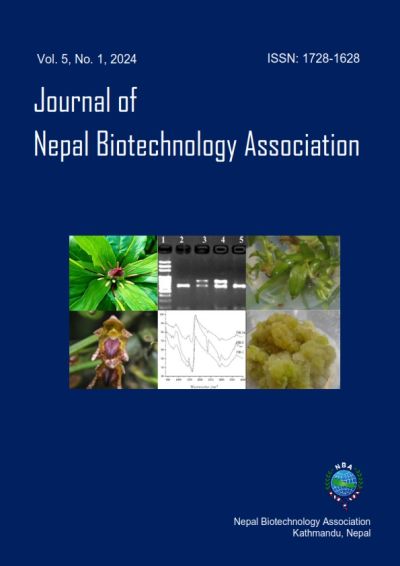Impact of Invasive Ageratina adenophora on Soil Fungi in Native Plant-Grown Soils in Nepal
DOI:
https://doi.org/10.3126/jnba.v5i1.63747Keywords:
Antagonists, Frequency, Invasive plant, Native shrubs, Soil fungiAbstract
Invasion of alien plants impacts both the above- and below-ground communities. The specific response of soil microbes to alien plants may depend upon the presence of native inhabitants and the origin of the byproducts released from different parts of invasive plants. This study evaluated the response of common soil fungi against Ageratina adenophora byproducts (extracts) in the presence of two native shrubs, Elsholtzia blanda and Osbeckia stellata, in Nepal. A total of eight fungal species were isolated from soils where these two native species were grown separately, and the occurrence of the fungi was evaluated. The occurrence and frequency of fungus species varied with extracts of A. adenophora leaves, litter and roots as well as with the presence of specific native plants. Particularly, A. adenophora further inhibits the fungi that are naturally less frequent in soil, like Hormodendrum sp. and fresh leaves and litter of A. adenophora were responsible for inhibiting antagonistic fungi like Trichoderma harzianum. Influence in below-ground fungal communities by A. adenophora is one of the reasons for poor growth and development of native seedlings and the mechanism could be a strategy of invasion of A. adenohora in novel areas.




